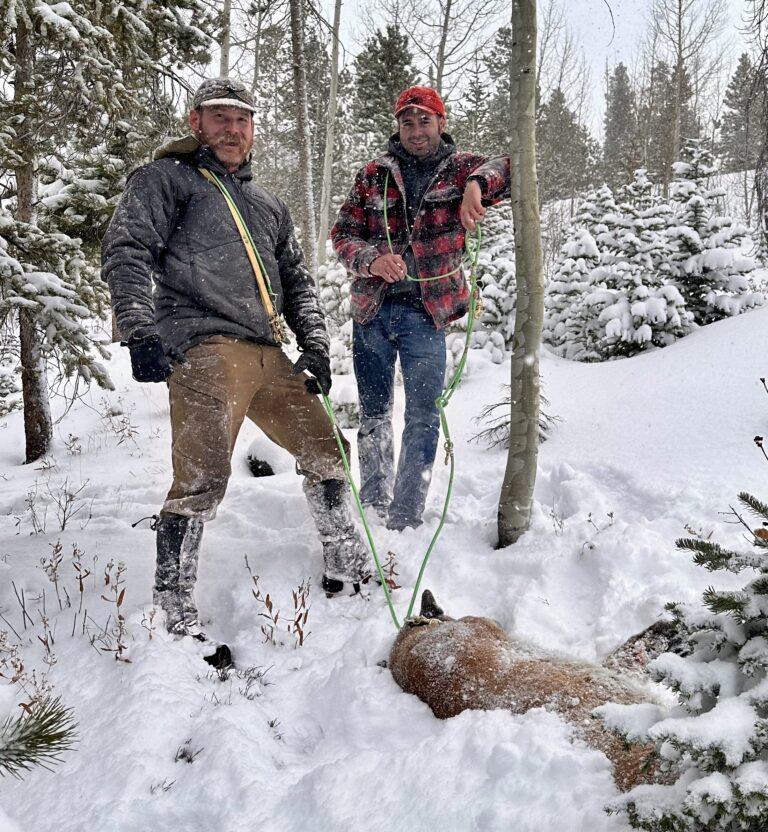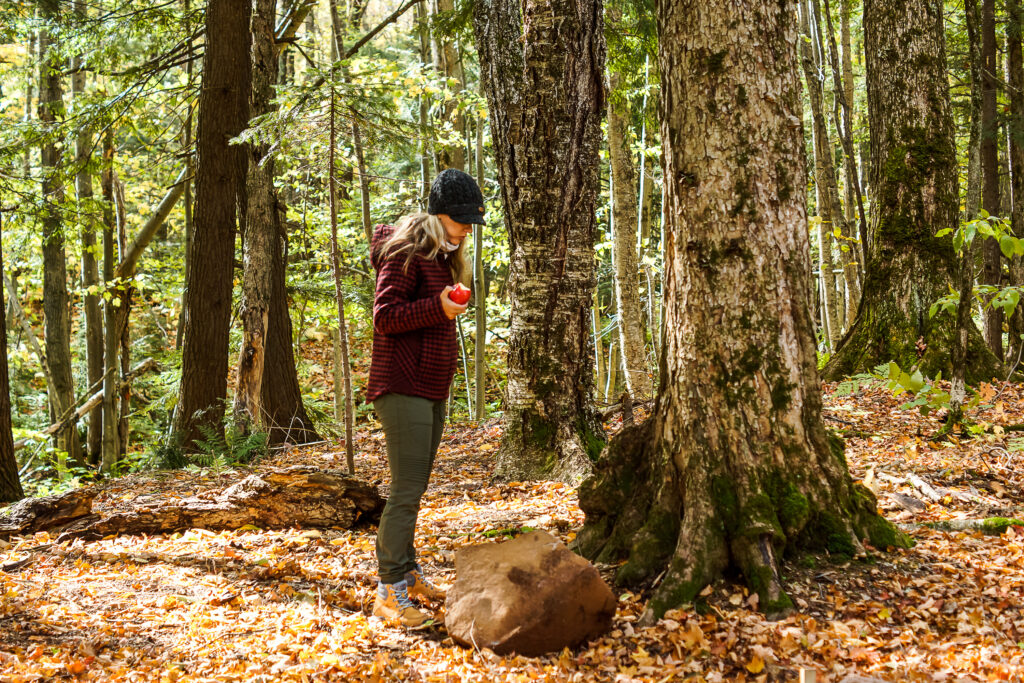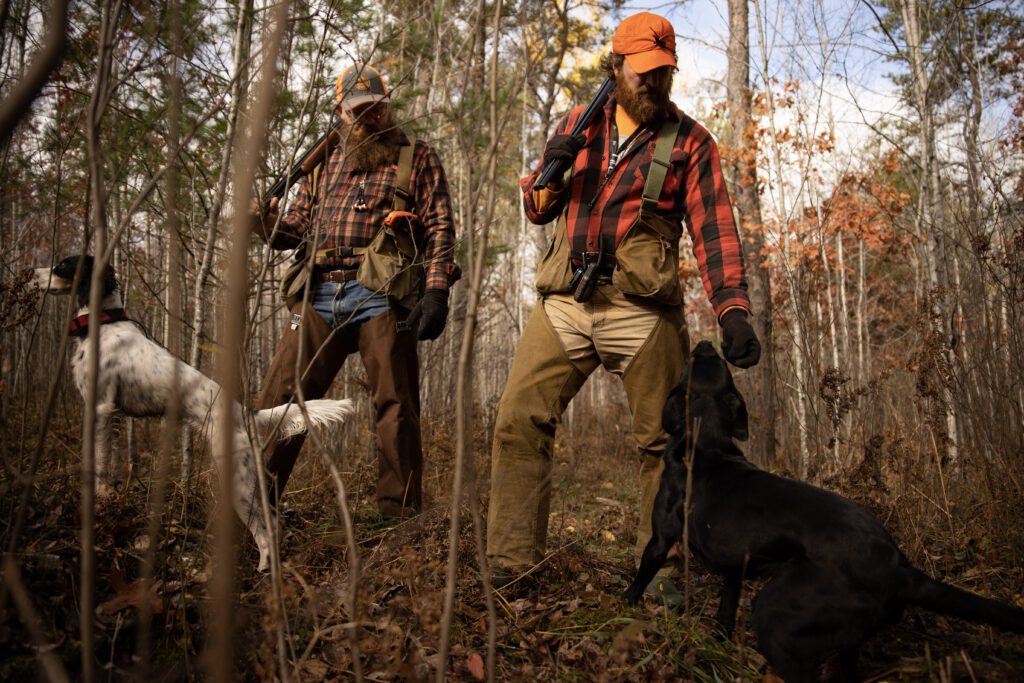Animal tracking is a remarkable way to gain insights into wildlife’s natural rhythms and patterns. It allows you to observe animals in their natural habitat and gives you a greater appreciation for the natural world around you. Keep reading for some animal tracking basics in our neck of the woods and tips on how to start your own tracking adventure.
Tracking Basics
When heading out for animal tracking, one of the critical considerations is the time of year. Winter is generally the best time to spot tracks because the snow makes them more visible, but don’t worry. Tracking can be enjoyed throughout other seasons, too. In spring, watch for tracks in the mud and along riverbanks. As for summer and fall, animals can be followed by examining their scat, feathers, or other signs they leave behind.
When it comes to tracking, the most important skill to develop is observation. You have to learn to tell the difference between various types of tracks and what they mean. For instance, fox, coyote, dog, and even cat tracks can appear very similar at first glance. You’ll have to note differences like the length of the toes and whether or not there are claw impressions left behind. Paying close attention to these details helps you figure out what kind of animal you’re looking at and how it might behave. Pretty neat, huh?
One way to find animals is by tracking—yep, you guessed it—scat. Although it may seem uncommon now, tracking scat has existed since ancient Greece. By examining the size, consistency, shape, and color of the scat, you can identify which animal has been lurking in the same path as you. Click here for an excellent guide on how to figure out which Michigan animal matches the scat you’re looking at.
Another way to track animals is by their feathers and fur. For animals like deer and fox, bits of fur and hair can be left behind in their beds and homes. Chunks of fur can also be found where animals rub their bodies on low-hanging vines or branches, whether to scratch an itch, mark their territory, or simply in passing. The bark or base of a tree may reveal signs of fur or hair, providing clues about the presence of nearby animals.
Behaviors and Habitats
It’s crucial to consider the environment a specific type of animal prefers. For example, beavers dwell near water, while raccoons seek out wooded areas. By understanding these habitat characteristics, you’ll have a better chance of spotting them in their natural habitats. When you see signs of a specific animal’s typical surroundings, you know you may be close to spotting one of your favorite creatures.
Besides exploring their tracks and habitat, studying animal behavior provides valuable insights. For instance, certain animals leave scrape marks to mark territory, while others rely on scent for communication. Some animals that mark territory by scraping, also known as bark stripping, are beavers and black bears. Not only are these good signs for tracking, but they can also provide a warning if you’re about to enter into a territorial animal’s space.
If you’re eager to delve deeper into the animal kingdom, try using trail cameras or setting up blinds for discrete observation. One large benefit of trail cameras is that you can follow animals’ patterns without disturbing the peacefulness of wildlife. You can see animals in action and learn their movements and body language. With the trail camera, you can also determine when it is best to go tracking. Plus, the footage may even reveal the presence of species you never thought to look for in the past.
When monitoring wildlife, it’s important to always remember to respect these creatures and their habitats. This includes refraining from disrupting their natural environment and adhering to proper etiquette. Be sure to follow the specific rules and guidelines set by national parks and wildlife areas to ensure the safety of both the animals and yourself. Remember that you are a visitor into their home, so you must be respectful. Avoid trying to touch or follow the animal or making any changes to its habitat. This helps ensure the animal’s well-being and natural environment remain undisturbed. Chasing or touching wildlife can be dangerous to the animals, and some species abandon their young when a human scent is detected near or on the animal.
Put it Into Practice
One way to help you become a wildlife-tracking expert is by using notecards. Prepare notecards in advance before you set off on your adventure. These notecards can be filled with scat drawings, footprints, and fur patterns for different animals. During downtime on your journey, take a look to refresh your memory. This link provides numerous suggestions to help you start your animal tracking adventure on the right foot, or perhaps we should say paw. Feel free to check it out and prepare to embark on a journey of wildlife discovery.
Animal tracking is the perfect adventure to learn more about the environment around you. Discovering tracks and behaviors will allow you to find fascinating creatures in your backyard that you may have never seen before. From bears to beavers, wildlife tracking is fun for every age. Some important things to remember are to never disturb an animal’s habitat, stay patient, and keep researching. Happy tracking!






